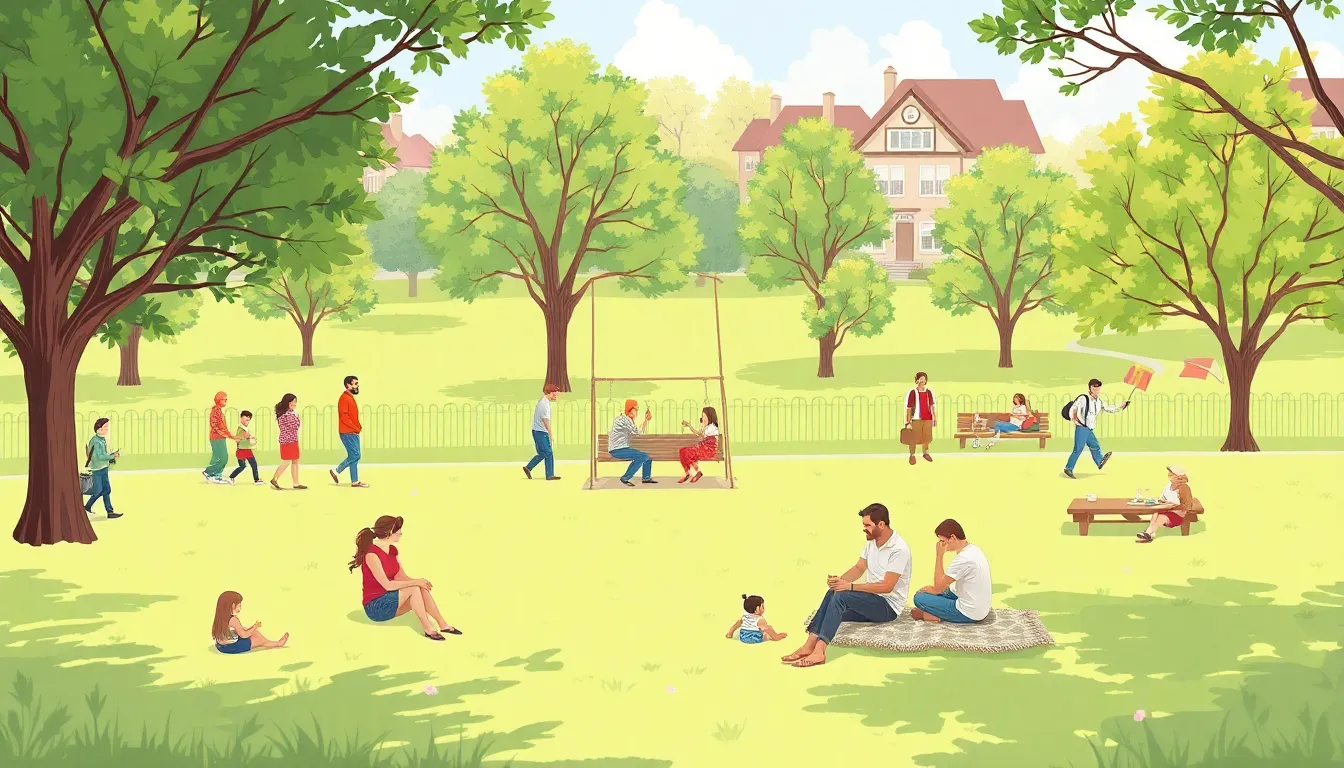Finding the perfect place to call home can feel like searching for a needle in a haystack—if that haystack were also on fire. Luckily, U.S. News & World Report has done the heavy lifting for us, ranking the best places to live across the country. From vibrant cities that never sleep to charming towns where everyone knows your name, this guide is your ticket to discovering where you might want to unpack those boxes.
Table of Contents
ToggleOverview of Us News and World Report Best Places to Live
U.S. News & World Report evaluates various factors to determine the best places to live in the United States. Criteria include quality of life, job market, and value of living. Each year, the ranking provides valuable insights for those seeking their next home.
Cities are assessed on metrics such as crime rates, schools, and health care quality, giving prospective residents a comprehensive overview. The publication also examines the local economy, ensuring that it meets residents’ needs. As a result, it offers guidance for individuals and families considering relocation.
The report highlights significant trends in urban development and community engagement, emphasizing the importance of vibrant local cultures. Overall, it expands the understanding of what makes a place desirable.
In 2023, notable cities like Austin, Texas, and Denver, Colorado, topped the list, showcasing diverse options for different lifestyles. Smaller towns frequently demonstrate affordability and a strong sense of community, appealing to those who prefer quieter settings.
Analysis emphasizes both established and emerging locations, encouraging readers to explore beyond typical choices. The approach is to prioritize options that meet various needs, enhancing the search for an ideal living environment.
Readers benefit from an interactive platform where they can personalize rankings based on preferences and priorities, making the process user-friendly. Ultimately, this resource serves as a reliable guide in the quest to find the perfect home in the ever-evolving landscape of American cities.
Criteria for Ranking

U.S. News & World Report bases its rankings on a comprehensive analysis of various factors. Quality of life and economic metrics play crucial roles in evaluating the best places to live.
Quality of Life Factors
Quality of life encompasses several components crucial to resident satisfaction. Safety significantly impacts the overall livability score; lower crime rates lead to a more secure environment. Educational opportunities, including school quality and access to resources, enhance community appeal. Healthcare facilities and services improve residents’ well-being, providing essential support. Recreational options, such as parks and cultural attractions, promote an engaging lifestyle. Local amenities, like restaurants and shopping centers, contribute to convenience and enjoyment. Each of these factors combines to create a holistic view of a location’s livability.
Economic Stability
Economic stability serves as a fundamental element in determining a city’s desirability. Job market strength influences overall population growth; robust employment opportunities attract residents. Median household income represents financial health, impacting individual spending power. Cost of living figures help gauge affordability, ensuring residents sustain their lifestyles without undue financial strain. Property values offer insights into real estate trends, reflecting community appeal. Local taxes also play a role in economic viability; favorable tax rates can enhance residents’ quality of life. All these factors collectively provide a clear picture of a city’s economic landscape.
Top Cities in the Latest Rankings
U.S. News & World Report’s latest rankings showcase some of the best cities to live in. Each selected city demonstrates unique features that cater to various lifestyles.
City One: Highlights and Features
Austin, Texas, stands out for its vibrant culture and thriving economy. Residents enjoy a booming tech industry and a rich arts scene. High-quality educational institutions and abundant recreational opportunities enhance the city’s appeal. With a mild climate, outdoor enthusiasts appreciate ample parks and natural spaces. The affordability compared to other tech hubs makes Austin particularly attractive for young professionals and families alike.
City Two: Highlights and Features
Denver, Colorado, is renowned for its stunning scenery and active lifestyle. The robust job market in sectors like aerospace and technology draws newcomers. Residents access numerous outdoor activities, from skiing in the Rockies to biking along scenic trails. An expanding culinary scene offers residents diverse dining options. Quality healthcare facilities and top-tier schools add to the living experience in Denver.
City Three: Highlights and Features
Raleigh, North Carolina, is celebrated for its family-friendly atmosphere and strong job market. Proximity to research institutions boosts economic growth and job opportunities. Educational options rank high, contributing to a well-informed population. Parks and cultural events foster community engagement, while a low cost of living attracts many new residents. With pleasant weather year-round, Raleigh combines work and leisure seamlessly.
Benefits of Living in Highly Ranked Places
Living in highly ranked places offers numerous advantages. Residents experience improved quality of life, often characterized by low crime rates and high safety standards. Access to top-tier educational institutions enhances opportunities for families, making children well-prepared for future endeavors. Opportunities abound in cities recognized for strong job markets, where unemployment rates tend to be lower and job growth appears robust.
Healthcare access significantly impacts resident satisfaction. Highly ranked places typically boast advanced medical facilities, ensuring residents receive quality care. Community amenities, such as parks and recreational facilities, promote active lifestyles and foster social connections among residents. A thriving local economy provides more than just jobs; it delivers a variety of entertainment options that enrich the overall living experience.
Affordability is another factor that influences the desirability of a location. Many highly ranked cities and towns balance reasonable housing costs with quality infrastructure and services. Homeownership becomes attainable, which contributes to personal stability and investment potential. Property values in these areas tend to appreciate, providing financial security for homeowners.
Individual preferences play a pivotal role in determining the best fit for any prospective resident. People seeking vibrant culture and nightlife may find cities like Austin, Texas, particularly appealing. Alternatively, those desiring a serene environment with a tight-knit community might gravitate toward smaller towns like Raleigh, North Carolina. Every highly ranked place presents unique attributes that cater to diverse lifestyles.
Choosing the right place to live is a significant decision that impacts overall happiness and well-being. The insights provided by U.S. News & World Report serve as a valuable tool for anyone considering a move. With a range of options from vibrant urban centers to charming small towns, there’s something for everyone.
As individuals explore these rankings, they’ll find that each location offers unique advantages tailored to different lifestyles. Whether it’s the cultural scene in Austin or the family-friendly atmosphere in Raleigh, the best places to live cater to various needs and preferences. Ultimately, the right choice hinges on personal priorities, making the search for a new home both exciting and rewarding.




